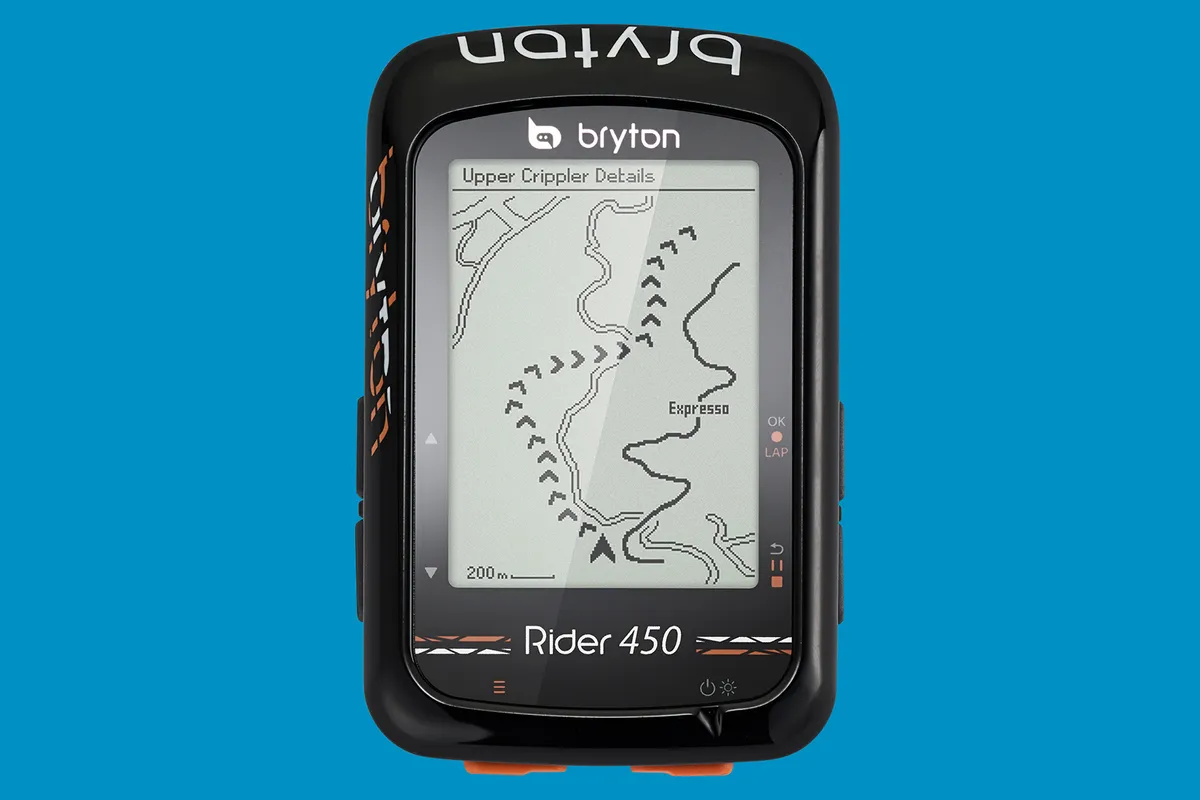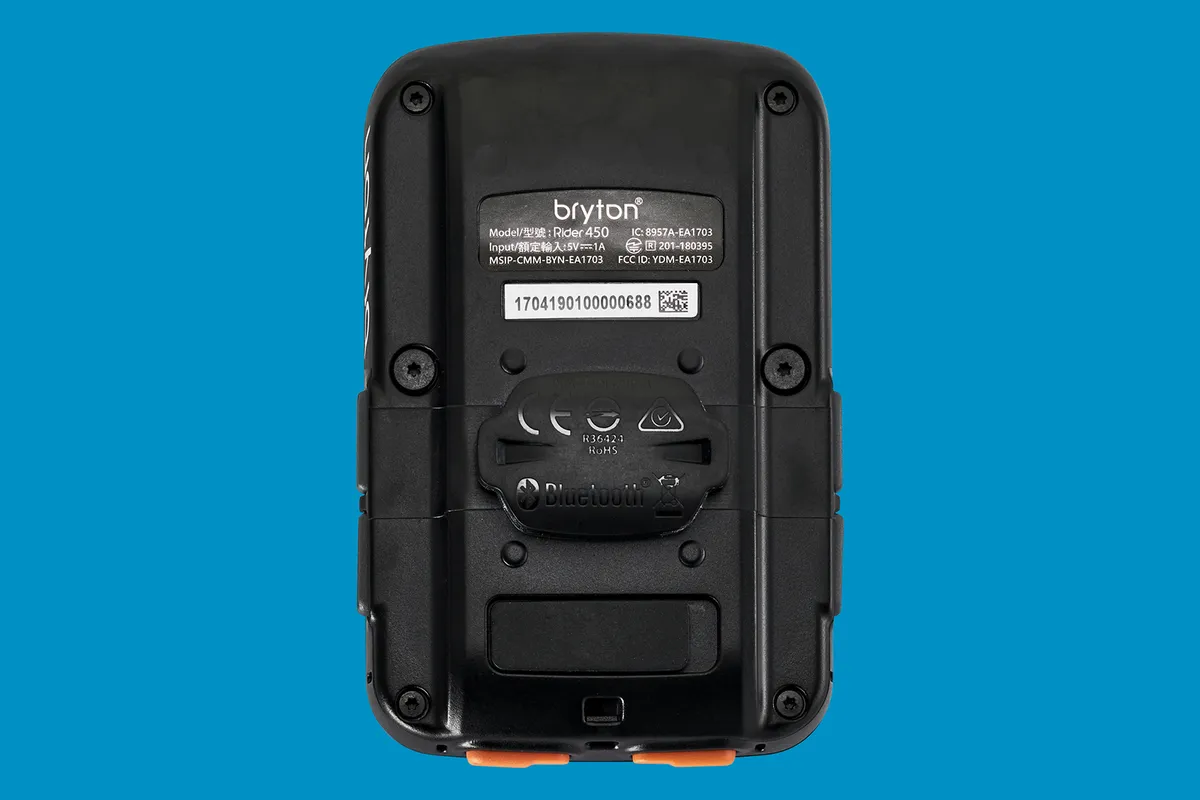Once you’ve downloaded Bryton’s Active app (iOS and Android), the 450 is a simple device to get going.
Pairing to the app and your phone creates links to Strava and TrainingPeaks etc, and you can also pair the 450 to sensors via BLE and ANT+.
Bryton Rider 450 app
Route planning is straightforward, and Bryton’s own app is intuitive and easy to use – simply highlight waypoints and the app does the rest. You can then save your route and upload via WiFi to the 450.
The 450 only takes routes created this way in the native app, so getting a GPX file from other software – such as Komoot, for example – requires a direct link to the file, rather than sending from alternative apps. This means you’re tied to a laptop and USB if you wish to do this.
Bryton’s app is one of the better ones on offer with route planning and structured workouts all presented well, plus it’s easy to use. Because of the multitude of buttons on the 450, doing anything set-up wise with the unit isn’t the smooth easy method as with the app. There are simply too many button-presses required to achieve simple operations.
Bryton Rider 450 pick-up and navigation
It took around two minutes for the GPS to pick up. However, sensor pick-up was much quicker, and connections remained stable across eTap, Di2, power meter and heart rate monitor (both chest strap and wrist-based).
You can also get decent access to these metrics thanks to the number of screens on offer, with up to 10 fields on each, plus you can assign two different bikes through the settings too.
The route navigation and turn-by-turn directions are as good as you’d expect from a monochrome screen, although map updates and rotation are a little slower than its big brother the Aero 60.
As with the Aero 60, the Rider 450 won’t offer you an alternative route should you deviate from your GPX route. So, if you take a wrong turn, it’s down to you to find your way back – something that’s made trickier by the button presses and map functions being a little slow.

Also zooming out on the map isn’t that helpful because of the loss of detail, plus you can’t scroll around…
While I never had any true GPS dropout – it continued to record my path and all of the metrics associated with it – I occasionally found that the map slowed to a near standstill and didn’t redraw to keep up with movements.
Scrolling through pages and circling back to the map screen did address this but it was an annoyance all the same.
The biggest bugbear I had with the 450 was not knowing when it was actually recording, especially because it displays direction and speed when not recording a ride.
The buttons are fairly straightforward in their functions with Up/Down on the left, and On/Lap and Enter/Pause/Stop as two buttons on the right (something that can cause confusion when trying to record a ride). At the base, you’ll find the Power/Backlight and Page buttons.
Bryton Rider 450 battery
The battery life is claimed to be a huge 32 hours, but using the 450 with sensors attached and riding to a GPX, I managed 19 hours before the battery indicator was down to a single bar.
So, it’s possible the 450 could get the run-time it states, but only if you were using it as a GPS recorder only.
Bryton Rider 450 overall
The Rider 450 is well-priced, and the Bryton app is easy to use and syncs well, but the user interface really needs some work. Also, true notification of when you’ve started recording wouldn’t go amiss.

How good is the Bryton Rider 450E for mountain biking?
Even though route creation is easy via the phone app (thanks to in-built compatibility with OpenStreetMap and plenty of MTB-specific detail), getting your routes onto the Bryton Rider 450E requires a Wi-Fi connection. This makes it frustrating if you like to download new routes to the GPS while you’re out riding.
Meanwhile, navigation is poor because there’s no on-device redirection if you deviate from a route. The monochrome screen makes it tricky to pick out details, especially if you’re in an area with lots of different paths, roads and tracks.
If you are following a route, the on-screen directions are relatively easy to understand, though. Because the map can’t be scrolled, using it as a navigation device without a programmed route isn’t possible, and this severely inhibits the device’s usefulness.
Add in the fact it has a fairly tricky interface, sluggish map scrolling, and a slow-loading zoom function, then the Bryton Rider 450E isn’t really recommended for mountain biking at all, unless you were just recording rides that is.
Product
| Brand | bryton |
| Price | 280.00 AUD,2180.00 EUR,150.00 GBP,200.00 USD |
| Weight | 70.1000, GRAM () - |
Features
| br_screenType | monolcd |
| br_connectivity | antPlus |
| Features | Memory: 300 hours In the box: Bar mount, cadence sensor, heart-rate strap, speed sensor |
| br_dimensions | 88mm x 53mm x 20mm |
| br_batteryLife | 32 hours (claimed) |
| br_waterResistance | IPX7 |
| br_screenDimensions | 35mm x 48mm |
